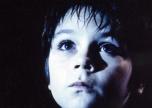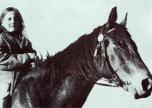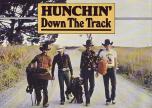The Trouble With Murder
08/07/2014About
Now available on Vimeo to stream and download here.
A powerful and gripping series looking at the history of sentencing for murder in New Zealand through the cases that shocked the nation. Over three compelling and thought-provoking episodes, The Trouble with Murder tells the story of how New Zealand has punished people who kill.
From the death penalty, last used in our country over sixty years ago, to today’s longer and longer non-parole prison sentences, to the introduction of ‘three strikes’ policies with the possibility of no chance of parole, this series offers a balanced view and unique perspectives on a contentious, controversial and hotly debated subject. You can stream or download the series here.
We can see in our newspapers and on television, sentencing for different crimes draws heated debate. In New Zealand it sometimes feels like we have became a nation fixated on ‘how long they get’, ‘who gets what’ and how jail time sentences compare with each other. Many describe sentencing as putting a price on a victim’s life.
None draws more feeling than sentencing for murder. It’s an emotionally explosive area and many believe life should mean life. But the often complex intricacies of sentencing also mean many people are in the dark about how our sentencing system actually works.
Funded by NZ On Air’s prestigious Platinum Fund and made by award-winning Wellington company The Gibson Group, The Trouble With Murder is a thought provoking examination of the history of sentencing for murder in New Zealand, told through the analysis of high profile murder cases and the shockwaves they sent through the culture of the time.
Making an engaging, active and accessible documentary series about a rather dense and complicated subject like murder sentencing initially felt like a daunting task says producer Jane Robertson, “But once we had identified the cases that had the most impact on our criminal justice system, we started to feel confident. We began to see how fascinating this series was going to be because the stories behind the cases were so interesting.
“We now had a wealth of historic and present day murder cases to tell but in order to tell them sensitively with context and depth, we needed to find the people who were directly involved in the cases and who cared about what happened. Finding these ‘storytellers’ became the next task.”

Along with the storytellers for each case, The Trouble With Murder hears from leading legal experts, justice system ‘insiders’ and others in the thick of sentencing or working in the area of violent crime. The legal system ‘insiders’ help inform our understanding of each case and how the justice system has changed and evolved.
Presenting a balanced point of view was important with such a polarising topic. A diverse range of perspectives from a variety of people are included in the series. People like former inmate Dr Paul Wood, who spent over a decade behind bars for murder. The families of victims offer an alternative and, at times, potent viewpoint to how we should punish people who kill. The series also follows those campaigning for harsher sentences and longer prison time.

From the start, director Tom Reilly wanted to grab the audience immediately. “The first episode had to be clear and compelling in its own right, presenting a broad overview of our topic through the five stories we chose to tell. Through this we wove a dramatic arc so the piece works as a whole. On top of this we had to set the tone for the rest of the series. And we had to present Dr Paul Wood, a convicted murderer who is now living on life parole.”
Reilly believes viewers are going to be startled by Dr Paul Wood. “It took careful filmmaking to tell his story fairly and sensitively. Everyone who encounters him comes away with their preconceptions rattled. We’ve captured an amazing case here. I’m looking forward to hearing how it pans out on talk-back after the show goes to air.”
Another challenge for director Tom Reilly was making the reenactments work. “From the beginning, I was clear I didn’t want hammy reenactments cutting in with our interviews and archive footage. I wanted to find a way to smooth the cuts between actuality, interviews and figurative elements. I’m really proud of what we achieved here. With Director of Photography, Guy Quartermain, we created studies of texture and light around the reenactment situations we set up, from eerie prison corridors to gunshots and hangings.”

Episode one of The Trouble With Murder, ‘Life for a Life’, looks at the process of sentencing today and what would’ve happened to murderers over 60 years ago in the time of capital punishment. In this episode what it means to be a ‘lifer’ and what a life sentence really means is also examined. Episode two, ‘Passion Power and Provocation’, looks at why people kill and who murderers are and episode three, ‘The Cost of Murder’, investigates parole and the real ‘cost’ of murder on families of victims and for society.

Strikingly cinematic stylisations, fascinating archive and revealing insights from criminal justice system ‘insiders’ create a powerful and dramatic backdrop to the real life stories and cases. With compelling interviews from key figures connected to the cases, including accounts from the families of victims, first hand eyewitness accounts and even interviews with the perpetrators themselves, The Trouble With Murder offers a unique insight into murder sentencing in New Zealand and how we punish people who kill.
Behind the scenes
Q&A with The Trouble with Murder Director, Tom Reilly
Episode 1 – Life for Life
What was challenging about this episode?
On first sitting down with the prop for the series it was clear we would be on a steep learning curve. The most immediate challenge was coming to grips with the history of how we’ve punished killers in New Zealand, from the 1893 Criminal Code Act through to the 2002 Sentencing Act. On top of this crash course in legal history we knew the show had to be compelling, story-driven television. So it was a matter of finding stories which were fascinating in their own right that could inform our understanding of how the Justice System has evolved. Also in the mix were current cases playing out in real time. It was a meticulous process weaving all these together and then scheduling our shoot around what we needed to capture.
What was your goal for this episode and how did you achieve it?
Ep 1 had to grab our audience. It had to be clear and compelling in its own right, presenting a broad overview of our topic through the five stories we chose to tell. Through this we wove a dramatic arc so the piece works as a whole. On top of this we had to set the tone for the rest of the series. And we had to present Dr Paul Wood, a convicted murderer who is now living on life parole. It took careful filmmaking, to tell his story fairly and sensitively.
Is there a highlight or moment that stands out to you for this episode?
From the beginning, I was clear I didn’t want hammy reenactments cutting in with our interviews and archive footage. I wanted to find a way to smooth the cuts between actuality, interviews and figurative elements. I’m really proud of what we achieved here. With Director of Photography, Guy Quartermain we created studies of texture and light around the reenactment situations we set up, from eerie prison corridors to gunshots and hangings.

What do you think people will take away from watching this episode?
Ep 1 is a thrilling yarn and an insight into the terror and trauma of Murder. It gives an overview of the huge social upheavals we’ve had in New Zealand over the past century and the effects these have had on our attitudes to punishing killers.
Is there anything you learnt from directing this episode?
I came onto this series with only a basic understanding of what a conviction for Murder really means. I realised very quickly why this is a hugely explosive topic that inspires fierce political debate. I also got the inside word from Dr Paul Wood on what it’s really like to be imprisoned as a murderer?
Were you challenged by anything in this episode?
Initially the dark details of these stories were a shock to me. I realised there are victims, police and public servants dealing with this trauma on a daily basis. But this darker side of life must be faced for the sake of maintaining a civilised society. So I found myself focusing on the broader issues and the redemptive aspects of these stories.
What will people be surprised about in this episode?
People are going to be startled by Dr Paul Wood. Everyone who encounters him comes away with their preconceptions rattled. We’ve captured an amazing case here. I’m looking forward to hearing how it pans out on talk-back after the show goes to air.
Episode 2 – Passion and Provocation
What was challenging about this episode?
In Episode 2 we rewound back to the 1950s. In Ep 1 we traced a broad outline of how New Zealand has punished killers over the last century. The format of the series now required us to go back to the final years of capital punishment. Some of these cases are quite old now so our challenge was to find people intimately connected with the stories. We were fortunate to find some amazing storytellers including socialite Anna Hoffman who witnessed the Freddie Foster murder firsthand and Hinemoa Awatere, granddaughter of war hero and convicted murderer Arapita Awatere. Linking these through to the modern cases required some careful and sensitive storytelling.

What was your goal for this episode and how did you achieve it?
Very few murders are planned. We set out to explore the idea that any normal person, under certain pressures, can be driven to commit murder. We asked how extenuating circumstances can reduce blame and how this can knock on to conviction and sentencing. So we set up six very different cases which surprised us, from pre-planned shootings through to crimes of passion and insanity. The journey through these is shocking and thought provoking.
Is there a highlight or moment that stands out to you for this episode?
Tracey Marceau was one of the last interviews we did. She was incredibly brave and spoke in detail about how her daughter was stabbed to death in their family home. By that stage I was quite used to discussing murder face-to-face with victims, killers and lawmakers. But this one shook me. When we got it back to the edit suite the Editor, Bridget Lyon said it was some of the strongest material she’s ever worked with. That means a lot coming from her.
What do you think people will take away from watching this episode?
There is an intense interplay here between two conflicting sets of ideals. One is that, in certain circumstances, we really can sympathise with people who are driven to kill – in self-defense for example. The other is our need to know that convicted murderers are being punished appropriately. These two viewpoints come head to head in this episode.
Is there anything you learnt from directing this episode?
I learnt secondhand from eyewitnesses, the terror of the moment a murder occurs and the trauma that reverberates down through the years from that single, horrific action. I also learnt that, just when you think you have a grip on what Justice looks like, you’ll be blindsided by another perspective. I learnt there are different kinds of Murder and a lot of the debate that occurs is around how we can possibly deal with these under one system.
Were you challenged by anything in this episode?
In the last part of this episode we cover a legal defence called Provocation. This was the defence Clayton Weatherston got so much attention for misusing in his trial. Though it was used for hundreds of years in English law, Provocation was removed from our law books in 2009. With the help of our very clever Producer Jane Robertson and Editor Bridget Lyon, I had to wrap my head around how Provocation worked and the gap it has left in our legal system. It’s an area of the law that we wanted to present clearly for our audience in a compelling way and in the end I think we did very well.
Tell me about the stylisations in this episode
Because we had three stories from pre-1970 in this episode I knew we’d have to rely a little more heavily on reenactment elements. It was a fine balance keeping these scenes active and dramatic while not making them look like low-budget period drama. We ended up shooting most of the scenes between an Italian café downstairs from work, my flat on Cuba St and my Aunty’s home in West Auckland. It’s a tribute to Director of Photography, Guy Quartermain these turned out so beautifully.
What will people be surprised about in this episode?
Some may be surprised to hear the details of what was going on here in New Zealand in the 50s. The country was rife with scandal and violent crime and hangings were a regular occurrence. This episode shows the huge range of circumstances that can drive a person to kill and how we’ve struggled to take these into account in our justice system.
Technical Specifications
TV Production
3 x 1 hour documentary series for Prime TV - screened January / February 2015
Cast And Crew
Contact for The Trouble With Murder: Gibson Group


















